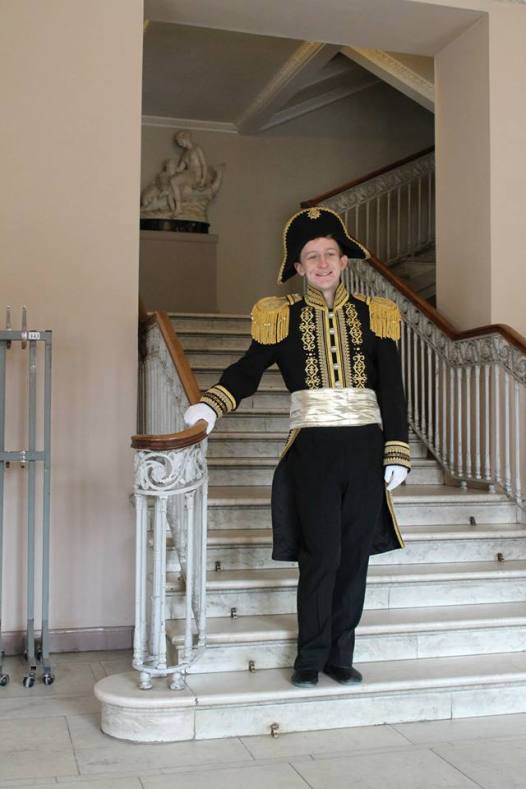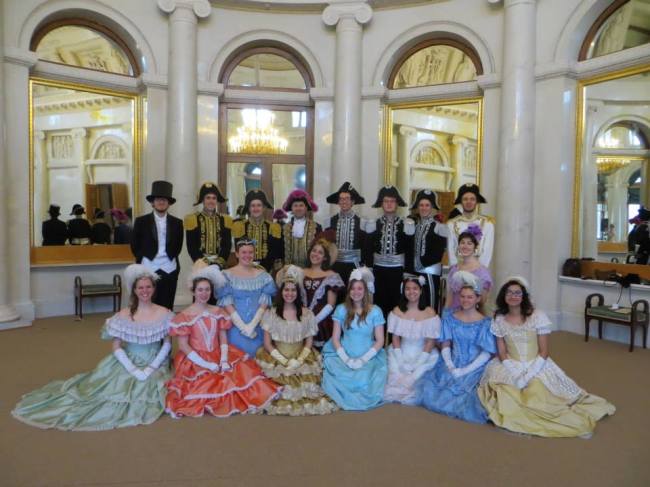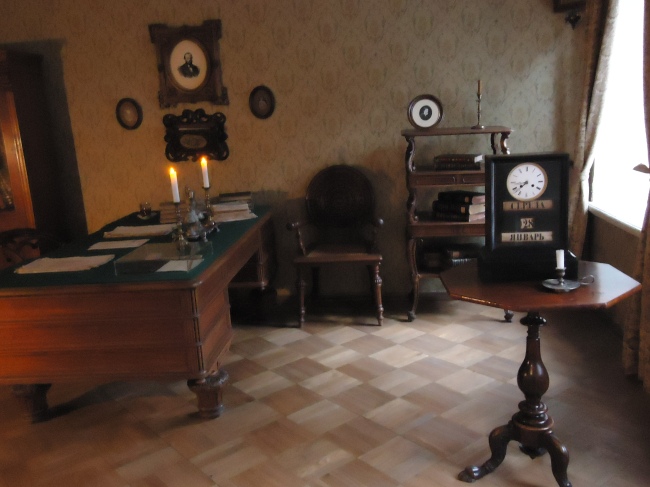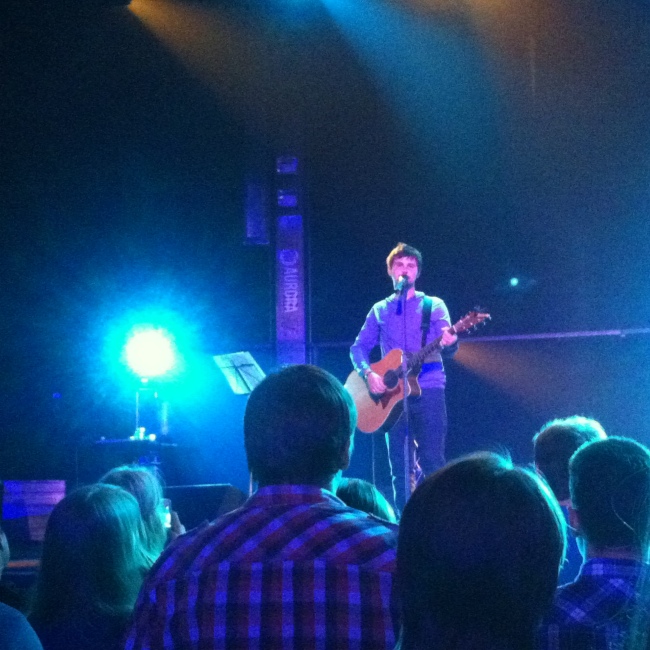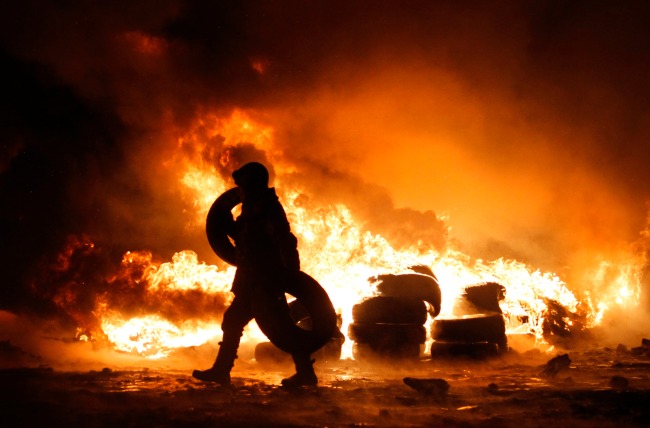Well, what do you know—over three weeks have passed since my last blog entry, and my original goal to have a new post every week has been thoroughly discredited. Yet I’m not about to give up on this space just yet! So here follows a condensed version of what I’ve been up to this month: my March in review.
Maslenitsa
The month of March kicked off with Maslenitsa, a weeklong Russian tradition celebrating the coming of spring and the beginning of Lent. Basically, it’s the Russian version of Mardi Gras, in which Russians gorge themselves on blini—delicious thin pancakes that can be eaten in all kinds of forms both sweet and savory. Maslenitsa festivities also include a ritual where a straw effigy is burned and its ashes buried in the snow, to fertilize the earth in preparation for spring.
On the last day of Maslenitsa, March 2, I went with some friends to check out the celebrations at Peter and Paul Fortress. I didn’t stay long enough to see the big bonfire, but I did treat myself to blini and wandered around a fortress crawling with stilts walkers, Russian folk dancers, and puppeteers. The festival was a lot of fun, if a bit kitschy, and it was attended by huge crowds of Russians from all generations. If you’re interested to read some more of my thoughts about Maslenitsa (including commentary about both fashion and politics!) check out this piece I wrote for The Heights.
Elagin
Last month I wrote about my orienteering adventure on Elagin Island. On March 9, I made my triumphant return to Elagin—although this time with an athletic challenge of a different sort, and sporting slightly different attire.
As part of our group excursion to Elagin Palace—a royal summer palace famous for its decadent balls—we were dressed up in aristocratic Russian costumes and given an hour-long ballroom dancing lesson. I like to think that I didn’t make a complete fool of myself, all while trying to follow dance instructions in Russian. Although no videos exist of me busting my moves (probably definitely a good thing), the occasion allowed for plenty of picture-taking. Here’s a shot of the whole group in all our finery.
Museums
No European study abroad experience would be complete without lots of time spent wandering around museums, and thankfully St. Petersburg has plenty to offer in that department.
Of course, the crown jewel of Russian art museums is the Hermitage, whose main collection is hosted in the former Winter Palace. The main comparison to be made here is the Louvre. Both museums have collections that are truly overwhelming, in both quantity and quality—you’ll never be able to spend enough time to appreciate everything on display, let alone the building, which is almost as beautiful as the artwork it hosts. On my first visit, I wandered somewhat aimlessly, beginning with exhibits on ancient Egypt and Greece before leaping into 20th century French modernism. (I particularly enjoyed seeing the Picasso and Matisse rooms). My second visit was more dedicated to the extravagant palace interiors, familiar to me from Alexander Sokurov’s 2002 film Russian Ark. For those who can’t make it to the Hermitage in person, Russian Ark isn’t a bad way to experience the museum’s grandeur. It’s a 100-minute movie shot entirely in the museum’s halls, recreating hundreds of years of Russian history with thousands of extras—and all in one unbroken tracking shot.
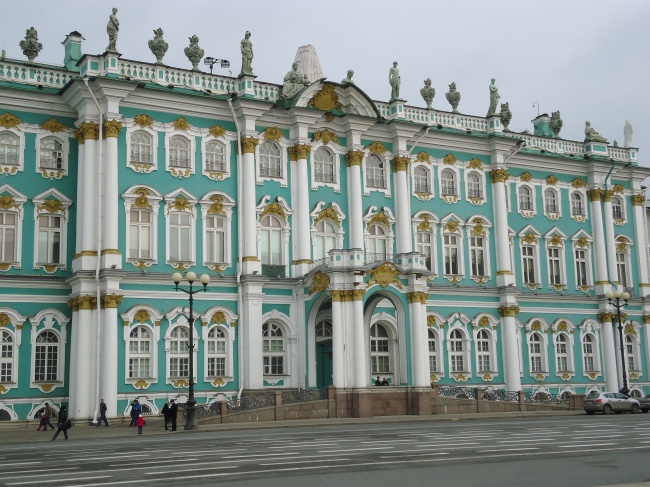 The Winter Palace/Hermitage Museum
The Winter Palace/Hermitage Museum
For another tour of Russian history, I went to the Museum of Political History of Russia, an impressively modern museum lined wall-to-wall with creative re-enactments, interactive electronic exhibits and video testimonials, tracing the history of Russia from the imperial era to Putin’s election. The most interesting exhibit to me was the section on Stalin’s reign; the museum seemed to pull no punches pointing out the evils and excesses of Russia’s wartime leader. The museum shrewdly pointed out the gap between the Soviet Union’s ideals and its reality. One graph on display compared Stalin’s agricultural targets for his infamous Five Year Plan, the reported figures, and the actual figures. (Guess which number was lowest). Another section of the exhibit reproduced dozens of personal letters written to Stalin; one I glanced at came from a 7 year-old in a farming family, telling Stalin that he wasn’t able to go to school because his family was starving. The anti-Stalinism of the museum was more strongly pronounced than I expected from a state-run museum—although the later parts of the exhibit, on Yelstin and Putin, had a much more neutral tone. I can’t help but wonder how the museum will represent the Putin era in a few decades, once he has left office for good.
Along a similar line, I was very taken by a World War II exhibit at the Rumyantsev Mansion, now the home of a museum on St. Petersburg’s history. The exhibit on what Russians call the “Great Patriotic War” focused in large part on the 900-day siege of Leningrad, a historical memory that looms large in St. Petersburg to this day. As an American who has always thought about World War II from the US perspective, it was enlightening to learn about the huge toll taken by the Russian people during the war. The siege caused an unthinkable amount of suffering—as many as 1.5 million are said to have died over the course of its 3 years, many of them civilians who starved to death. The museum gave a human weight to such statistics by showcasing the diary of Tanya Savicheva, an 11 year-old girl who recorded the dates that various members of her family died, until finally “Only Tanya is left.” The tour ended with a haunting video that juxtaposed pictures of war-torn Leningrad with modern photos of Petersburg taken in the same locations; it was strange to see streets that have become familiar to me suddenly become strange again by the presence of soldiers, rubble, and other signs of war.
On a lighter note, this Sunday I finally made my way over to the Dostoevsky Museum, located in the building where the writer lived out the last few years of his life and wrote The Brothers Karamazov. About half of the museum is a recreation of Dostoevsky’s apartment; the other half is an exhibit tracing the story of his life. The biographical exhibit reminded me that Dostoevsky’s life was as turbulent as any of his characters, but what made the biggest impression were the tiny domestic details of Dostoevsky’s apartment. Prominent place was given to the nursery, emphasizing the importance of children for Dostoevsky, who believed that life without them was basically meaningless. (That conviction is certainly on display in The Brothers Karamazov.) I also enjoyed seeing the great writer’s study, and learning about his peculiar work habits. He did all his writing from about 11 pm to 5 am, slept until the early afternoon, and upon waking would hand over his scribbled manuscripts to his wife Anna Grigoryevna, who transcribed them into a more readable form. Among the personal items that the museum displays are two original pages from Dostoevsky’s draft of The Brothers Karamazov. After seeing the writer’s scribbly handwriting on those two pages, I cannot envy Dostoevsky’s wife her job.
Of all the museums I’ve seen here, though, one of them easily takes the cake for the weirdest. That would be the Kunstkamera, which opened in 1727 and was founded by none other than Peter the Great himself. Today the museum largely focuses on anthropology and ethnography, with exhibits that catalog the cultures of various tribes and ethnic groups across the world. So far, so normal—but then you get to the oldest collection.
Peter’s original museum was a “cabinet of curiosities,” designed to educate the Russian people about the natural world by showcasing strange scientific specimens. To that end, Peter collected a huge assortment of human and animal fetuses with strange, disturbing deficiencies—malformed limbs, swollen heads, and much worse. To this day, these fetuses are preserved at the Kunstkamera in glass jars, drawing the attention of crowds clearly less interested in the exhibit’s scientific value than its freak show quality. I’m not a squeamish person, but something about the exhibit was unsettling to me on an intellectual level—it seemed somewhat dehumanizing to present these fetuses as almost alien specimens, to be scrutinized by a gawking public. But for those curious to see such curiosities, Google Images can help you out.
Vasya Oblomov
Moving from the halls of Russia’s history to its present, last Friday I went with my friend Hunter to a concert by Vasya Oblomov, a Russian rapper whose music takes an unflinching look at Russia’s present political situation—and emerges with almost nothing good to say.
Vasya Oblomov on stage at the Aurora Concert Hall
Oblomov (the stage name comes from a famous Russian novel) is an unapologetic critic of Putin and all that he represents, and his songs bring a biting, satirical edge to the problems of modern Russia. His song “Кто хочет стать милиционером?” (“Who Wants to be a Policeman”) for instance, takes on the subject of police corruption and bribery; the title itself is a pun on the Russian version of Who Wants to be a Millionaire. Other subjects tackled by Oblomov include Russia’s lack of independent media, falsified elections, environmental degradation, and the absurd excesses of Sochi. Although the rapper has a few songs with lighter themes— “Начальник” (“Boss”) is a crowd-pleasing hit where a fed-up employee tells off his boss with colorful language—most of his work is undeniably cynical.
Obviously, such an uncompromising outlook does not endear Oblomov to a wide national audience. Even in the crowd on Friday, which I assumed would be a trusty cross-section of Russian liberals, a few spectators were peeved by Oblomov’s political stance. Late in the concert one guy in the VIP section began to heckle him, but Oblomov brushed him off: “You can cry if you want to, but it’s my show, and I’m going to say what I want.”
Towards the end of the show, Oblomov asked for four women to come up on stage for one of his most popular songs, “Magadan.” As he asked each of them who they were and where they were from, one of them said she was from Crimea. This produced quite the reaction from the crowd, a mixture of applause and “ooh-ing” and lots of shouts and murmurs that I couldn’t make out. Oblomov then asked what opinion she had about the annexation, telling her “there’s no censorship here,” but she seemed reluctant to answer. A few audience members—especially the more inebriated ones—happily voiced their opinion, however, which seemed overwhelmingly positive. It was a striking anecdotal moment for me, suggesting just how popular Putin’s recent actions have been in Russia, even for a crowd predisposed not to trust him.
Oblomov, though, seemed to be rolling his eyes at much of the rhetoric coming from the crowd. It was evident that he looked on Putin’s actions with much more skepticism than his audience. No doubt he’s got a song in the works about the very subject.
Wrapping Up
There was plenty more going on for me in March beside these few highlights, of course. I went to Peterhof, the so-called “Russian Versailles,” although I may need to return in the spring—it wasn’t as magnificent in the freezing winter as I know it should be. I got in touch with my inner cinephile at a local movie theater, checking out Lars Von Trier’s Nymphomaniac: Volume 1 and Aleksei German’s Hard to be a God, neither of which I’ve been able to fully make up my mind about. I spent plenty of weekends checking out St. Petersburg’s bars, cafes, and even “anti-cafes,” cool hangout spots where you pay for the time you stay and then receive unlimited tea, coffee and snacks.
And, of course, I have continued to be busy with classes—never more so than now, in the middle of our midterm period. I’ll have more to say about academics soon, I hope, but as I approach 2,000 words I suspect that this blog post has outstayed its welcome. So for those of you who made it to the end, I leave you with a vague pledge to write again…sooner than I did last time.
